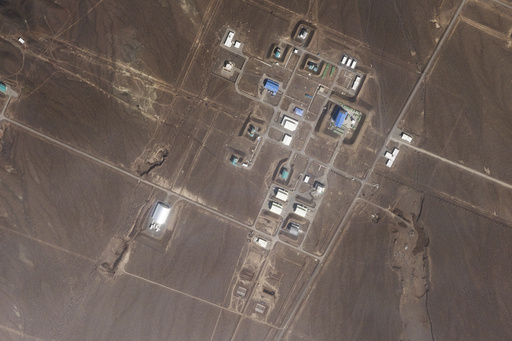
DUBAI, United Arab Emirates — Recent satellite imagery has revealed that an Israeli assault on Iran may have significantly impacted a site associated with the paramilitary Revolutionary Guard, which is involved in the production of ballistic missiles and the development of its space program. The attack took place early on Saturday in an area that Iran had not publicly acknowledged, leading to a wave of inquiries regarding its implications, especially given the silence from the Guard regarding any damage they may have sustained.
The targeted base, located in Shahroud within Semnan province, has not been officially acknowledged by Iranian authorities in the context of Israeli strikes, which were previously reported only in Ilam, Khuzestan, and Tehran. The ramifications of the attack may limit the Guard’s capacity to produce solid-fuel ballistic missiles, a crucial element of Iran’s defensive strategy against Israel. As Iran has been unable to procure advanced weaponry from Western nations, especially the United States, its domestic production of such missiles has become essential for national security.
Additional satellite evidence indicates destruction at two other military locations near Tehran that are tied to Iran’s missile development operations, potentially further hindering progress in this area. A missile expert from the International Institute for Strategic Studies commented on the lack of clarity regarding the extent of the damage, noting that while there is visible impact, it is uncertain whether production capabilities have been severely hindered.
Recent high-resolution imagery from Planet Labs analyzed by the media has depicted considerable destruction at the Shahroud base, positioned roughly 370 kilometers northeast of Tehran. Among the notable damage, a large central building was shown to be destroyed, with remnants of its frame visible in morning images from Tuesday. The imagery showed vehicles around the site, likely from officials assessing the situation, along with an unusual number of cars parked at the main entrance.
Additional small buildings nearby also displayed signs of damage, despite ongoing construction work at the site. While Iran has not officially acknowledged an attack on Shahroud, the extent of the destruction suggests laser-focused strikes were executed. Following the assault, lower-resolution images indicate that new damage was evident at the base, supporting the view that Israeli missile strikes were likely responsible.
The large, damaged structure at the base appeared to be surrounded by earth barriers, indicating its possible use for handling high explosives, as suggested by the missile expert. It is likely that this facility was involved in operations related to solid propellant. Large crates found in the vicinity may also relate to missile production, possibly linked to advanced Iranian ballistic systems that have been previously employed in operations against Israel during regional conflicts.
This strike, among others across Iran, heightens pressure on the Iranian government as it scrutinizes the extent of damage to its military capabilities while attempting to convey a message of resilience. The Iranian Foreign Minister, during a meeting with diplomats, asserted that the country’s air defenses had mitigated the damage and steps were being taken to restore functionality to the affected areas.
Close to where the destruction occurred lies a concrete launch pad utilized by the Revolutionary Guard, which has successfully executed satellite launches. The U.S. intelligence community has expressed concerns that Iran’s development of satellite launch vehicles could hasten the timeline for creating intercontinental ballistic missiles, which can deliver nuclear payloads. Amid rising tensions, remarks from the head of the International Atomic Energy Agency suggest that Iran possesses enough enriched uranium for several nuclear weapons, should it choose to pursue that path.
Despite Iran’s consistent denial of pursuing nuclear weapons, U.S. intelligence and IAEA reports indicate that prior military nuclear programs existed. Destruction at military facilities tied to such programs raises questions about Iran’s long-term intentions regarding its missile and defensive capabilities. The current situation appears to embody significant damage to Iranian defenses, indicative of vulnerability towards further strikes, as noted by analysts taking stock of the effects of recent Israeli actions.
For now, the ongoing assessment within Iran may focus on the ramifications of the attack and how it translates into broader strategic considerations amid a complex geopolitical landscape.
